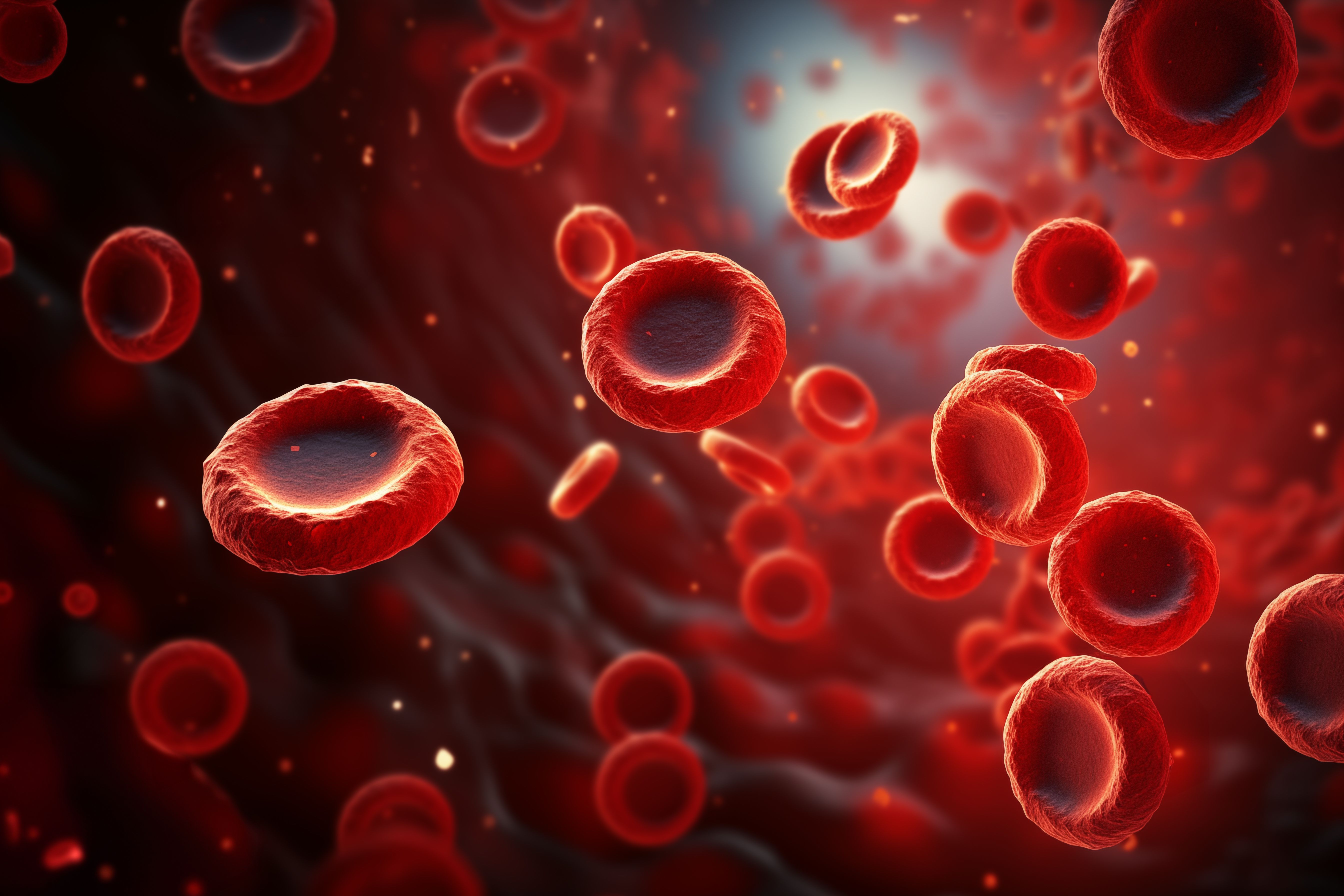Publication
Article
Evidence-Based Oncology
Genetic Links to High Altitude Found to Reduce Inflammation, Speed Response to PV Therapy
Author(s):
Key Takeaways
- The Andean NFKB1 variant is linked to reduced inflammation and improved response to ropeginterferon-α in myeloproliferative neoplasms (MPNs).
- Genotyping for the NFKB1 variant may help predict patient response to ropeginterferon-α treatment in polycythemia vera (PV) and essential thrombocythemia (ET).
Research presented at the 66th American Society of Hematology Annual Meeting revealed that a genetic variant enriched in Andean populations, associated with reduced inflammation and improved response to ropeginterferon-α, could guide more precise treatments for polycythemia vera (PV) and essential thrombocythemia.
Questions about why an indigenous population living the Andes Mountains of South American had elevated hemoglobin led to the discovery that a variant linked to living at high altitude is also tied to reduced inflammation, as well as improved response to a therapy used to treat myeloproliferative neoplasms (MPNs).1
Jihyun Song, PhD | Image credit: University of Utah

The research to be presented today at the 66th American Society of Hematology Annual Meeting & Exposition in San Diego, California, could lead to more precise treatments for polycythemia Vera (PV) and essential thrombocythemia (ET). Today, these 2 are treated with ropeginterferon-α (Besremi), and the work led by Jihyun Song, PhD, of Huntsman Cancer Institute at the University of Utah, now shows that populations with Andean enriched NFKB1 haplotype respond better to ropeginterferon-α.
The study has been accepted for publication in Nature Communications.
PV and ET are both associated with overproduction of blood cells; PV causes the bone marrow to produce too many red blood cells, while ET produces too many platelets. Both PV and ET can lead to chronic inflammation, increase the risk of blood clots, and progress to leukemia. These conditions also increase hypoxia-inducible factors (HIFs), which can impact the survival of cancer cells in low-oxygen environments.
At a press briefing prior to Song’s presentation today, senior author Josef T. Prchal, MD, a physician scientist who holds the Charles A. Nugent, MD, and Margaret Nugent Endowed Professorship in Medicine/Hematology at the University of Utah, explained that the genetic variants that developed over time to allow the Aymara people survive in the Andes can be seen in some other populations—and they correlate with some differences in MPN phenotypes.
Josef Prchal, MD | Image credit: Photo supplied by ASH

“Our study suggests that with genotyping, the NFKB1 variant can be used as a biomarker for determining which patients may be more or less responsive to ropeginterferon-α treatment,” Prchal said.
He opened his remarks with an overview of how populations evolve with their environments; not only the Aymara but also Tibetans and Ethiopians have adapted to altitude in different ways, which he explored in earlier papers in Science2 and Nature Genetics,3 among others.
It is known that when humans spend time high altitude, their bodies adapt to reduced oxygen levels by increasing hemoglobin concentrations in the blood. This allows the body to carry more oxygen. Prchal explained how Song took this knowledge further. “We set up to try to find the gene which explains the hemoglobin,” he said.
Prchal and Song were gathering blood samples in the Andes when Song determined that she should look beyond gene differences and look instead at how genes are activated. Through this approach, Song focused on alternatively spliced NFKB1 (AS-NFKB1); she identified 3 novel, alternatively spliced NFKB1 transcripts associated with inflammatory and HIF pathways, which investigators say would explain the elevated hemoglobin.1
The transcripts functioned in different ways, with the net effect of indicating “a partial or complete loss of NFKB1’s function as a NF-κB suppressor.”
Prchal said there were some twists along the way. There were some common genes between the Tibetans and the Aymara, he said, but the NFKB1 gene also showed up among Tibetan Chinese and in some Europeans, but was rare for Africans.
“With this knowledge, we have correlated this gene with very high hemoglobin, and we also correlated it with higher response to oxygen. But it was a puzzle that this gene actually was associated with increased inflammation,” he said.
“Increased inflammation makes you tired. It also is a foundation for mutations and increases of cancer,” Prchal continued. But when Song examined lab-grown cells with slightly increased inflammation, the presence of the gene caused the inflammation to go down.
“So, in fact, this gene in excessive inflammation will make it less likely, and we assumed it may be very important for cancer,” he said.
Drawing on their work in MPNs, Song examined samples from patients with slightly increased inflammation to look at the inflammatory genes, and found they also had lower activity of genes which cause thrombosis. Next came a look at how patients with the NFKB1 gene responded to ropeginterferon-α.
“We looked at those people who achieved complete hematological remission and those who did not,” Prchal said. He said that those who inherited the gene were much more likely to achieve complete remission, he said.
“Under TNF-induced inflammatory stress, unlike wild-type NFKB1, AS-NFKB1 suppressed inflammatory gene expression, suggesting a protective mechanism against inflammation,” the investigators wrote.
Investigators have many more questions, Prchal said, such as whether the Aymara phenotype cuts the thrombotic rate or decreases myelofibrosis or acute myeloid leukemia transformation.
The National Institutes of Health sponsored the study.
Reference
- Song J, Kim SJ, Prchal JT. Andean enriched NFKB1 haplotype reduces inflammation and improves response to ropeginterferon Alfa-2b in polycythemia vera (PV) and essential thrombocythemia (ET). Presented at: 66th American Society of Hematology Annual Meeting & Exposition, December 7-10, 2024; San Diego, CA: Abstract LBA-4.
- Simonson TS, Yang Y, Huff CD, et al. Genetic evidence for high-altitude adaptation in Tibet. Science. 2010;329(5987):72-75. doi:10.1126/science.11894
- Lorenzo FR, Huff C, Myllymaki M, et al. Genetic Mechanism for Tibetan high-altitude adaptation Nat Genet. 2014;46(9):951-956. doi:10.1038/ng.3067






